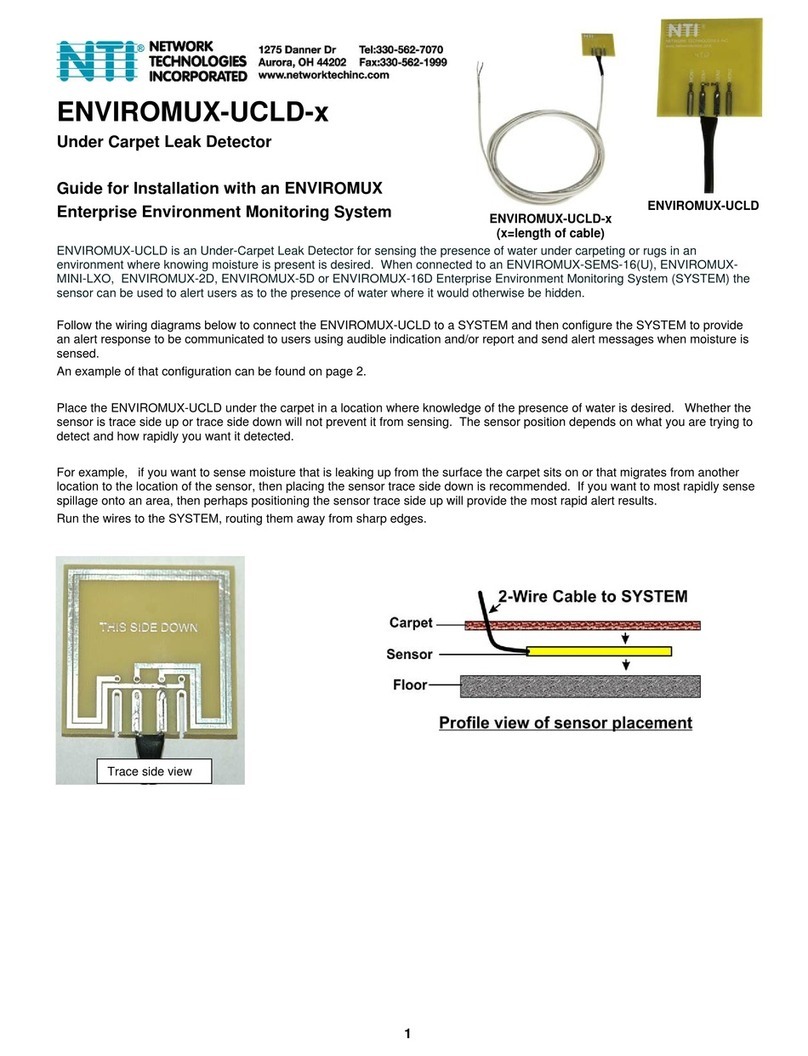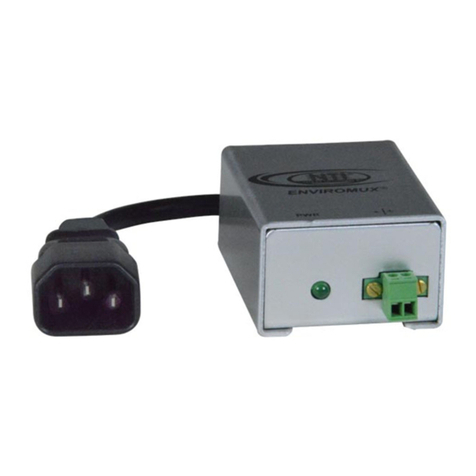
7
JP1‐BOn,JP1‐COn=HighSensitivitywithWindMode
JP1‐BOn,JP1‐COff=LowSensitivitywithWindMode
JP1‐BOff,JP1‐COn=HighSensitivity
JP1‐BOff,JP1‐COff=LowSensitivity
RemovepowertotheVIB200SensorpriortochangingJumpers.Once
Jumpersareputbackinthedesiredpositionreconnectpower.
Choosingthesensorsensitivitydependsuponthequalityofthefence‐
looseortight,heavyorlightlinkgauge,oldornew,theheightofthe
fence‐short5ft.toregular6‐8ft.totall>8ft.andthesurrounding
environment‐remoteorpublic,protectedorwindy.Selectingthe
sensitivityisabalancebetweengeneratinganalarmoutputuponavalid
attacktothefenceandfilteringoutnuisanceevents.Onanewtightfence
ofregularheight,thesensorwillworkwellwithalowsensitivitysetting.
Onalooseorolderfence,theVIB200willworkbestwithahighsensitivity
setting.Highsensitivitysettingscanbeselectedforremoteareaswithno
publicaccessbutlowsensitivitysettingsarebetterforfencesadjacentto
publicareas.
Inadditiontotworegularsensitivitysettings,HighandLow,theVIB200
hastwosensitivitysettingswith“WindMode”.InWindModetheVIB200
measuresvibrationonthefenceduetowindoraconstantvibration
sourceandmeasuresanimpactduetoclimbingorcuttingagainstthis
constantvibration.InWindModethesensitivityoftheVIB200sensorwill
decreasewithanincreaseinwind.Forthisreasonthetwosensitivity
settingswithWindModearelesssensitivethanthetwosettingswithout
WindMode.Ifthefencethatisbeingprotectedisinaclearareawith
windthenselectoneofthesensitivitysettingswithWindMode.Ifthe
fenceisinanareawithlittlewindorprotectedbyotherbuildingsthen
chooseoneoftheregularsettings.
8
TESTING:
WiththeVIB200mountedtothefenceandthecoverremoved,selectthe
sensitivitywithJumpersJP1‐BandJP1‐Cpertheguidelinesabove.Hook
upa9Vbatterytothesensor.Testtheabilityofthesensortodetect
impactsandclimbsatthedesiredrange(30to50feet).Movethesensor
tovariouspartsofthefenceandtest.TheLEDswillalertyoutothe
responseofthesensor.OneoftheuniqueaspectsoftheFlairVIB200is
thateachindividualsensorcanbetunedtoaparticularfencesection.
Oftenthequalityofthefencecanvaryfromonesectiontothenext.
DecreaseorincreasethesensitivityofthesensorbychangingJumpers
JP1‐BandJP1‐Ctogenerateanalarmuponthedegreeofimpact/attack
tothefenceyouwanttoidentify.Agoodruleofthumbistoselecta
sensitivitythatgeneratesanalarmatthe3rdor4thstepinaclimb.Atthis
sensitivitythesensorshouldnotgenerateanalarmatasingleimpactto
thefence.
Whentestingwithabattery,youmustdisconnectthebatteryfromthe
sensoraftereachtestinorderforthesensorcounterandtimertoreset.
Thecounterswillalsoresetoncethesensorproducesanalarmoutput
andtheREDLEDflashes.Don’tforgettodisconnectthebatterywhen
changingthesensitivitysettingalso.
Onceyouhaveselectedanappropriatesensitivityandsensorspacing,
mountallofthesensorstothefenceandwiretopowerandalarm
control.Atanytime,thesensitivityofoneormoreoftheVIB200sensors
maybechangedtotunethemtoaparticularsectionoffenceordesired
response.

























